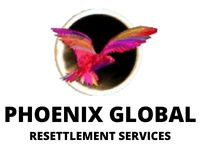In recent years, Canada has emerged as a top destination for immigrants seeking a better quality of life, excellent job opportunities, and world-class education and healthcare systems. The Canadian PR visa is one of the most popular immigration pathways for individuals and families planning to settle permanently in Canada. Whether you’re looking to build a thriving career, access top-tier public services, or ensure a bright future for your children, securing a Canada PR visa is your first step.
In this comprehensive guide, we’ll walk you through everything you need to know about the Canada PR visa process, its benefits, eligibility criteria, and how to navigate the system successfully with expert guidance.

What is a Canadian PR Visa?
A Canadian Permanent Resident (PR) visa allows foreign nationals to live, work, and study in Canada indefinitely. It is not the same as Canadian citizenship, but PR holders enjoy most of the rights and privileges of citizens, except voting rights and access to some high-security government jobs.
As a permanent resident of Canada, you gain access to:
- Free public healthcare and education
- The right to live and work in any province or territory
- Pathway to Canadian citizenship after meeting residency requirements
- Social security benefits
- Legal protection under Canadian law and the Charter of Rights and Freedoms
Top Pathways to Apply for Canadian PR Visa
There are multiple immigration pathways available, each designed for a specific applicant profile. Here are the most popular routes:
1. Express Entry System
The Express Entry system is the fastest and most popular route for skilled workers. It operates through three economic immigration streams:
- Federal Skilled Worker Program (FSWP)
- Federal Skilled Trades Program (FSTP)
- Canadian Experience Class (CEC)
Applicants are ranked on a Comprehensive Ranking System (CRS) based on age, education, language proficiency, work experience, and adaptability.
2. Provincial Nominee Program (PNP)
The PNP allows Canadian provinces and territories to nominate candidates based on their specific labor market needs. If you receive a provincial nomination, it adds 600 points to your CRS score—significantly increasing your chances of receiving an Invitation to Apply (ITA).
3. Family Sponsorship
Canadian citizens and PR holders can sponsor their spouse, common-law partner, dependent children, parents, and grandparents for permanent residence.
4. Canada Work Visa Leading to PR
Many foreign nationals come to Canada on a Canada work visa and later apply for PR through the Canadian Experience Class or PNP pathways. Working in Canada helps you build local experience, which increases your CRS score and eligibility.
Canada PR Visa Process: Step-by-Step Guide
The Canada PR visa process involves several key steps. Understanding and following them carefully increases your chances of success.
Step 1: Check Your Eligibility
Before applying, determine your eligibility for the PR programs. Most programs assess applicants on:
- Age
- Educational qualifications
- Language proficiency (IELTS/CELPIP)
- Work experience
- Adaptability
- Employment offer (if applicable)
Step 2: Get Your Educational Credentials Assessed (ECA)
If you completed your education outside Canada, you’ll need an Educational Credential Assessment (ECA) to confirm that your qualifications are equivalent to Canadian standards.
Step 3: Take Language Proficiency Tests
Language proficiency is mandatory. Take tests like IELTS General Training or CELPIP for English, and TEF for French. Higher scores boost your CRS ranking.
Step 4: Create an Express Entry Profile
Once you have your ECA and language scores, create your Express Entry profile. You’ll receive a CRS score, and your profile will be entered into a candidate pool.
Step 5: Receive Invitation to Apply (ITA)
If your CRS score is above the cutoff in a draw, you’ll receive an Invitation to Apply for PR. You have 60 days to submit all required documents.
Step 6: Submit PR Application
Submit a complete application with supporting documents such as:
- Passport and ID
- Educational certificates
- Work experience letters
- Medical certificate
- Police clearance certificate
Step 7: Biometrics and Medical Examination
You’ll need to provide biometrics and undergo a medical exam from an IRCC-approved physician.
Step 8: Get Your PR Visa
If everything is in order, you’ll receive a Confirmation of Permanent Residence (COPR) and the PR visa stamped in your passport.
Canada Work Visa vs. PR Visa
Many people confuse the Canada work visa with PR. While both allow you to work in Canada, they are very different in terms of privileges and duration.
| Feature | Canada Work Visa | Canadian PR Visa |
| Validity | Temporary (1–3 years) | Permanent |
| Employer-specific | Yes (in most cases) | No |
| Health Benefits | Employer-dependent | Public healthcare |
| Path to Citizenship | Indirect | Direct |
| Job Flexibility | Limited | High |
A Canada work visa is ideal if you want to enter the country quickly and gain local experience. Many professionals later transition to permanent residency through PR pathways.
Benefits of the Canadian PR Visa
Holding it comes with numerous advantages:
1. Right to Live and Work Anywhere in Canada
You can choose to settle in any province, from bustling Ontario to serene Nova Scotia, without needing additional permits.
2. Access to Social Benefits
You and your family can access free public healthcare, subsidized education, and social security benefits.
3. High Standard of Living
Canada is consistently ranked among the top countries for quality of life. With low crime rates, clean environments, and inclusive communities, it’s a great place to call home.
4. Family Sponsorship
Once you become a PR holder, you can sponsor your family members to join you in Canada, further strengthening your support system.
5. Eligibility for Citizenship
After living in Canada as a permanent resident for at least three years within five years, you can apply for Canadian citizenship.
Challenges in the Canada PR Visa Process
Despite the benefits, the Canada PR visa process can be complex and time-consuming. Common challenges include:
- Incomplete documentation
- Miscalculated CRS scores
- Low IELTS scores
- Confusion between immigration programs
- Delays in ECA or background verification
This is where professional guidance can make all the difference.
How Phoenix GRS Helps You Get Your Canadian PR Visa
At Phoenix GRS, we specialize in helping clients achieve their Canadian dream through expert immigration consulting. Here’s how we support your Canada PR visa journey:
1. Personalized Profile Assessment
Our experts assess your profile to identify the best immigration pathway—whether it’s Express Entry, PNP, or via a Canada work visa.
2. Documentation Assistance
We ensure your documents are complete, accurate, and submitted within deadlines to avoid rejections or delays.
3. IELTS Preparation Support
Need to improve your language scores? We provide guidance and resources to help you ace the IELTS or CELPIP exams.
4. End-to-End Process Management
From ECA to post-landing support, our team manages every step of the Canada PR visa process, ensuring a stress-free experience.
5. Transparent Communication
We keep you updated with real-time status, CRS trends, and opportunities to improve your profile through job offers, PNPs, or education.
Conclusion
The Canadian PR visa is your gateway to a prosperous and fulfilling life in one of the world’s most immigrant-friendly countries. While the Canada PR visa process can seem overwhelming, it becomes manageable—and even rewarding—with the right information and support.
If you’re ready to start your journey, whether directly through PR or initially on a Canada work visa, let Phoenix GRS be your trusted immigration partner. Our proven expertise, personalized strategies, and end-to-end services will turn your Canadian dream into a reality.
Start your Canada PR journey today with Phoenix GRS – Your gateway to a better future.

